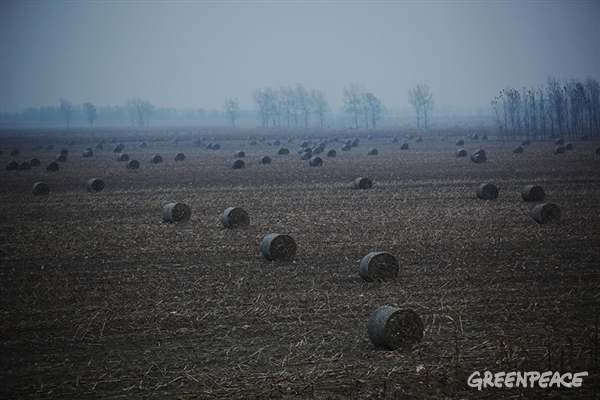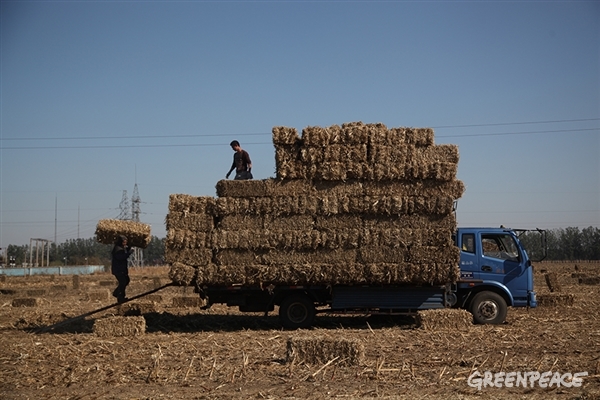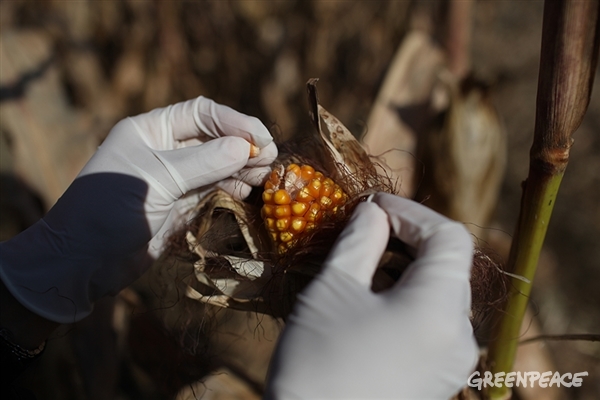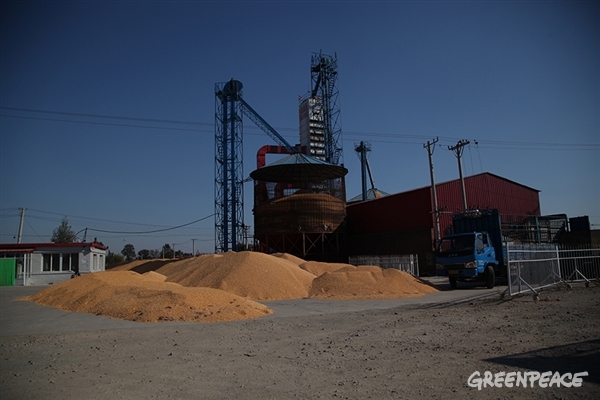
There is something special about the soil and the air of the north eastern plain. On the boundary of inhospitable wilderness – the Mongolian steppes and the frozen forests of Siberia – yet one of the most fertile stretches of land in all of China, the north eastern plain is a breadbasket for all of China.
Though the broad expanses of rich, black soil are a powerful sight, the great plain is also extremely delicate. Exposed to dangers such as overly intensive agriculture, its balanced ecosystem can easily be damaged. In early 2015 we received reports from farmers in Liaoning province that genetically engineered (GE) corn was being cultivated illegally at the heart of the fertile plain. Further tip offs came from journalists and industry experts.

If this was the case it would be an extremely serious issue. The cultivation of GE corn in the wide open spaces of the north eastern plain could easily lead to GE contamination and massively disrupt the local ecosystem. The risk to humans would also be large. Liaoning Province is one of China’s largest producers of corn, and the corn harvested from this region – as a raw material and as part of countless processed goods – ends up on the shelves of supermarkets across the country. Millions of consumers could have unwittingly consumed GE produce.
Moreover, the cultivation of GE corn for commercial purposes in China is highly illegal.
It was imperative that we investigate.

We took our first of seven trips to the fields of Liaoning Province in May, the seed sowing season. We stayed in the industrial city of Shenyang and drove out to the field to take samples and conduct interviews every day. The north eastern plain is so vast. We would drive for hours before we reached our sampling site, the whole time passing by enormous fields bustling with the bronze-tanned faces and first agricultural work of the year.
At our sampling sites took random samples of corn, which were later tested by a qualified third party lab. That summer and autumn we took a further six investigative field trips to Liaoning’s corn growing region. With each trip we uncovered further evidence of illegal GE cultivation on a shocking scale.
The numbers speak for themselves:
- Six of seven samples of corn seed from seed suppliers in the regions tested positive for GE contamination.
- 93% of samples taken from fields were illegal GE strains, and in some counties 100%.
- At a local grains wholesale market, seven of seven random samples of corn tested positive for GE.
- Of 14 random samples of corn products taken from supermarkets and agricultural markets in the area, 13 tested positive for GE, including two samples from major international and national supermarket chains in Shenyang city.

China’s laws and regulations on commercial GE production are extremely clear. Except for two strains of crops (cotton and papaya) the commercial production of all GE is outlawed. The regulations are in fact very comprehensive. What is happening in Liaoning province is not the exploitation of loopholes and grey areas.
It is simply and blatantly illegal.
The Ministry of Agriculture must urgently investigate the origins of the illegal GE corn seeds which have been sold in Liaoning province. If discovered, the GE seeds should be destroyed. Tackling the seed supply means tackling the root cause of the problem. On top of this, the Ministry of Agriculture should set up regular crop inspections so as to ensure GE crops are not being illegally grown.
Besides, GE is by no means a solution to food security or safety. Ultimately it is a destructive and unsustainable form of agriculture. Ecological agriculture, on the other hand, is an agriculture that is good for the planet and good for people. Rooted in thousands of years of practice, organic, ecological agriculture – which grows food with the environment, not against it – has the power to ensure the health of the rich black soils of China’s north eastern plain for generations to come.
Zhang Jing, Food and Agriculture Campaigner, Greenpeace East Asia
